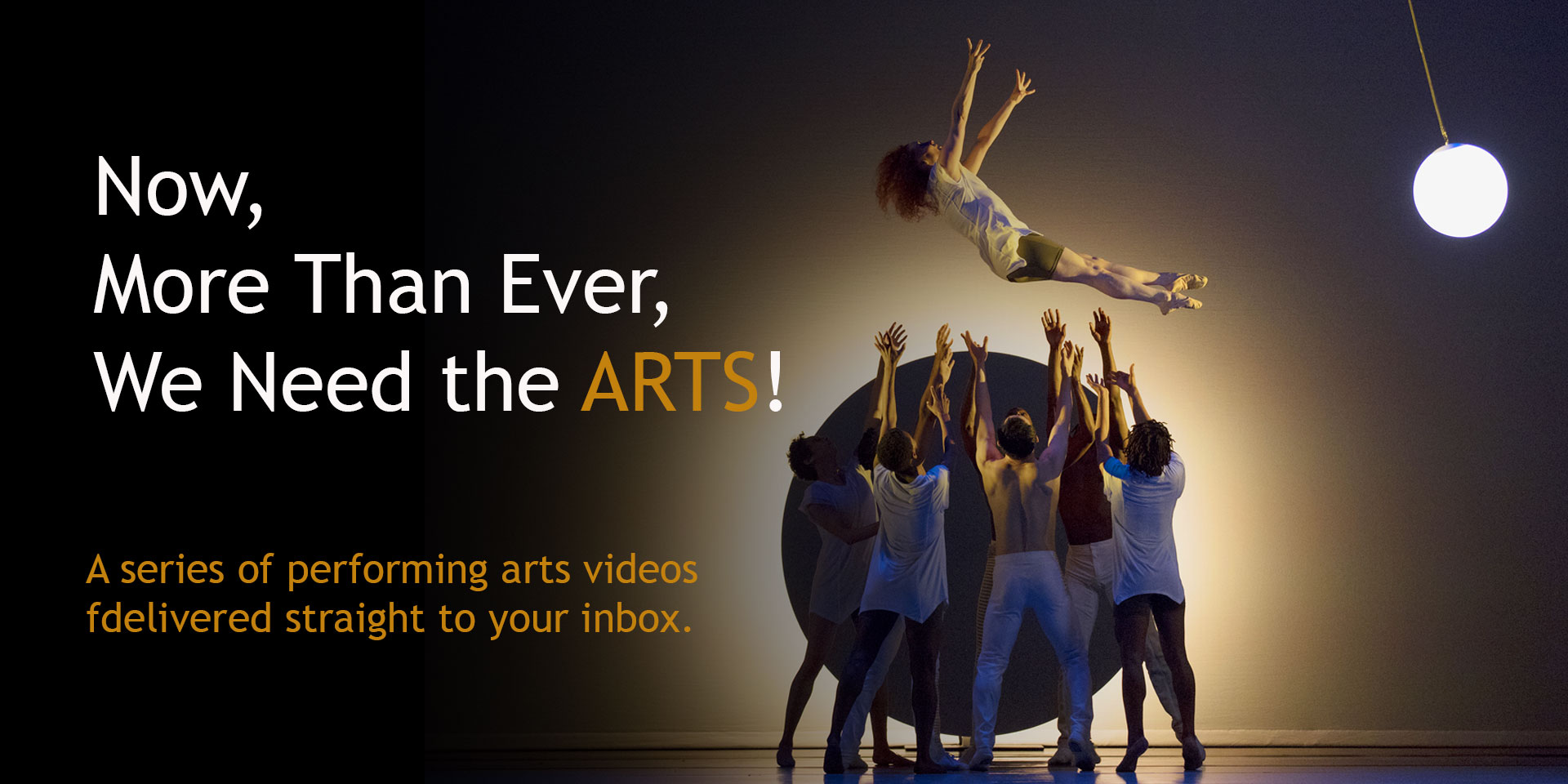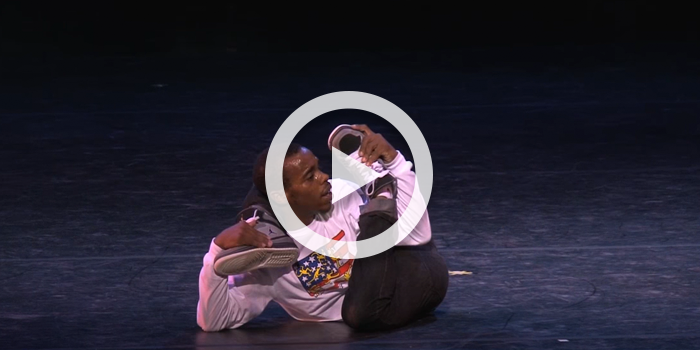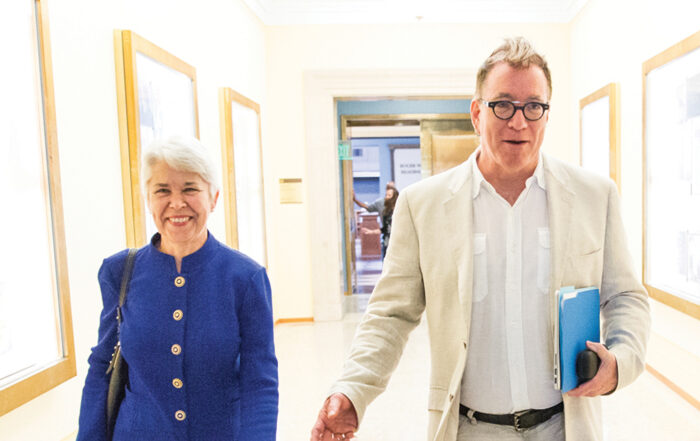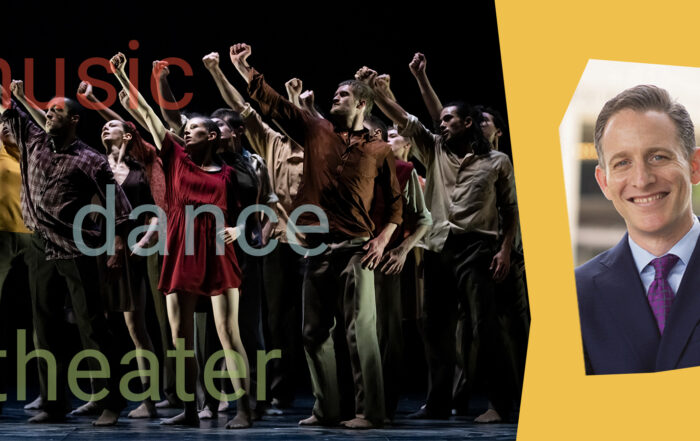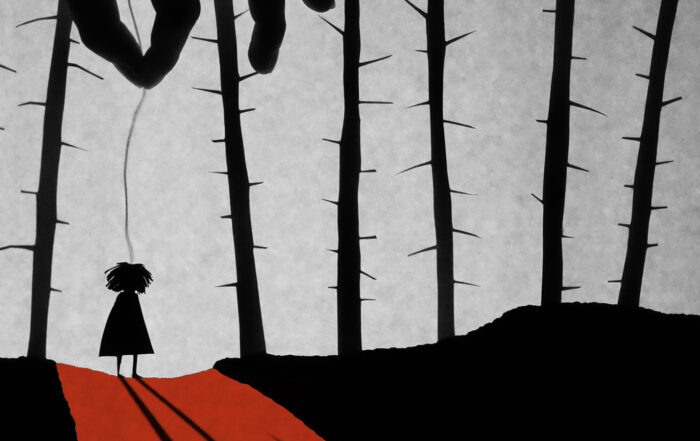In this issue: Donald Byrd’s Greenwood performed by Alvin Ailey American Dance Theater; Thomas Adès’ “O Albion” performed by Endellion Quartet; Joni Mitchell’s “Both Sides, Now;” Charles-Marie Widor’s Toccata from Symphony for Organ No. 5 performed by organist Wayne Marshall; Thomas Tallis’ Spem in alium performed by Gaechinger Cantorey and SWR Symphonieorchester; Vaughan Williams’ Fantasia on a Theme of Thomas Tallis performed by the BBC Symphony Orchestra
Now, More Than Ever: Issue 19
Greenwood
Donald Byrd, choreographer
Alvin Ailey American Dance Theater
In observance of Juneteenth this week, it gives me great pleasure to share with you this newly released video of choreographer Donald Byrd’s powerful Greenwood, a riveting ensemble work from the Alvin Ailey American Dance Theater that draws on the 1921 Tulsa Race Massacre as a source. (Greenwood was to have received its Bay Area premiere at Zellerbach Hall in April, but those performances were cancelled in the early days of the COVID-19 pandemic.)
This thought-provoking work will be available online through Thursday, June 25, at 3:30pm PDT, along with videos that invite viewers behind-the-scenes at the Ailey studios during the creative process, a short film that re-enacts the incident that sparked the bloodshed, and a conversation about the work with Ailey artistic director Robert Battle and Donald Byrd. Set to music by Israeli violist and composer Emmanuel Witzthum, Greenwood navigates through one of the worst incidents of racial violence in US history and explores the story through different lenses of those who were affected. To learn more about Greenwood and the history of the 1921 Tulsa Race Massacre, please visit Ailey’s blog.
Alvin Ailey American Dance Theater was born out of the Civil Rights Movement when visionary founder Alvin Ailey saw the need to celebrate the lives and stories of African Americans and understood the power of dance as a tool for social change. During this challenging time, the company continues to use dance to inspire, educate, and unite one and all in a universal celebration of the human spirit.
Juneteenth is the oldest known celebration commemorating the ending of slavery in the United States. On June 19, 1865, Union soldiers led by Major General Gordon Granger landed at Galveston, Texas with news that the war had ended and those enslaved were emancipated.
Thomas Adès: “O Albion” from Arcadiana, Op. 12
Endellion Quartet
“O Albion,” the sixth of seven movements in Arcadiana (1994), Thomas Adès’ first work for string quartet, is unlike any other section in the piece—slow, reflective, chorale-like. I generally think of this composer’s music as being filled with amoebic, translocating, shape-shifting sounds, informed by wonderful grotesqueries and a fascination with extremities of register, tempo, and volume. But here we find Adès in a decidedly quieter and more nostalgic frame of mind, creating music that might even be compared with Elgar’s.
But that’s what always amazes me about Adès’ compositions—he masters whatever he takes on (works as diverse as film scores, chamber and solo pieces, operas, and large-scale symphonies). He’s also one of the greatest pianists I know. (If we run into each other, remind me to tell you the story of his Winterreise with Ian Bostridge.)
As evidenced by larger works like his recent opera The Exterminating Angel (which follows, roughly, the plotline of the Luis Buñuel film), Adès also has revealed himself be an extraordinarily gifted musical storyteller, especially strong in delineating character and subtext. As with so many of the finest composers, he has developed his own sound world, a musical language entirely his own, yet his works instantly make sense, commanding the power to appeal to a wide audience.
“Both Sides, Now”
Joni Mitchell, composer and vocalist
I regret that I was late to discover Joni Mitchell for myself, so I never had the chance to hear her live, but I now deeply appreciate her poetic lyrics and beguilingly direct music, and I understand why she is so beloved by some of the greatest American singers of our time, not to mention audiences. This is probably my very favorite of her songs, and I love this video, probably because you hear her as you do on most of her albums, playing and singing her own work in a manner that’s disarmingly fragile and vulnerable. (Even though she was a big, big star, it still seems a bit paradoxical to watch her perform before such a huge crowd—400,000 people at the 1970 Isle of Wight Festival.)
Ultimately, I think “Both Sides, Now” is all about perspective. And as was the case in our June 4 issue of Now, More Than Ever, when we looked at Benjamin Millipied’s choreographic take on Bach’s Chaconne from the D minor Partita, we’re encouraged to consider the subject (life, in this case) in two different ways—in its full reality, and as we perceive it to be. Perhaps one of the greatest lessons we can absorb is to understand the gap between the two, and to greet that realization with both acceptance and peace.
Charles-Marie Widor: Toccata from Symphony for Organ No. 5
Wayne Marshall, organ
The French organist, composer, and teacher Charles-Marie Jean Albert Widor (1844–1937) is today remembered primarily for his 10 organ symphonies, and the final movement from his Fifth Symphony for Organ, commonly referred to as simply “Widor’s Toccata,” is perhaps his single most famous composition. It’s often used as recessional music at wedding ceremonies or on festive Christmas occasions, but you’ve probably never heard it played quite as fast as here, by the brilliant British (of Barbadian descent) organist Wayne Marshall.
The talents of this multi-talented artist—first, and foremost, an accomplished organist, Marshall is also a fine pianist and conductor—were discovered early, and following studies at Chetham’s School in Manchester, England, he continued his education at London’s Royal College of Music and Vienna’s Hochschule für Musik. Marshall began his professional life as organ scholar of Manchester Cathedral and St George’s Chapel, Windsor, and subsequently developed an international reputation for exceptional virtuosity across a wide repertory. Today, he enjoys a thriving international career. Here, on the organ of Fátima Basilica in Portugal, Marshall performs Widor’s famous Toccata at a pace very few could match, but in his hands it is both articulate and compelling.
A side note: like Thomas Adès, Marshall is a product of a fine British music education tradition that has been remarkably successful recognizing promising talent early in its development. I’ve always been impressed by this system’s ability to prepare young musicians to perform at a world-class level—it’s something we in the United States would do well to emulate.
Tallis: Spem in alium
Gaechinger Cantorey
SWR Symphonieorchester
Hans-Christoph Rademann, conductor
Thomas Tallis is a rather mysterious figure, a 16th-century composer of primarily church music for both the Catholic and Protestant liturgies. Born a Catholic, he managed to survive during a time when political upheavals caused the pendulum to swing from Catholic to Protestant to Catholic, and back to Protestant again. Apparently, he was never persecuted, managing to remain a member of the “Old Faith” while also becoming a chief composer for the new Church of England. Today, we hear his choral music, but little else.
For a concert presenter, Tallis’ transcendent Spem in alium presents one of the greatest of challenges. Not only does it require 40 individual soloists who can sing with a consistency of sound across all registers, but it also eats up an enormous amount of rehearsal time. Even when all of that is in place, the piece is only 10 minutes long, and you still need to construct a full program around it. But when you get it right, the results are pure magic.
I remember being involved in a workshop performance with the Tallis Scholars, who provided their 11 voices, to which we added an additional 29 singers—young artists and choral directors—from around the world. Together they performed a lovely program of late-Renaissance choral works from England and Flanders. This was the concluding work. It would have to be.
Vaughan Williams: Fantasia on a Theme of Thomas Tallis
BBC Symphony Orchestra
Sir Andrew Davis, conductor
Four hundred years later, the music of Thomas Tallis found new life in the work of Ralph Vaughan Williams, the early-to-mid 20th-century English composer whose output included operas, ballets, chamber music, secular and religious vocal pieces, and orchestral compositions (including nine symphonies), written over 60 years.
One thing this video shows well is that the Fantasia on a Theme of Thomas Tallis is essentially comprised of music for three groups, a large string orchestra, a smaller one, and a quartet, which together create a disconcertingly delightful spatial effect. For me, the dialogue between the two larger bodies always feels very much like a conversation between the past and present, between Tallis’ time and Vaughan Williams’.
This video was filmed at Gloucester Cathedral, where, in 1910, the Fantasia received its premiere, conducted by the composer. It had mixed success, although Ivor Gurney (one of those famous English composers of the time whom few outside Britain mention anymore) reported to have been so overwhelmed that he could not sleep that night. Happily, the Fantasia has withstood the test of time and is now considered Vaughan Williams’ most successful orchestral work. It’s not performed all that often anymore—like Tallis’ Spem in alium, it demands a tremendous amount of rehearsal time—which is truly a shame.
Now, More Than Ever Full Playlist
Now, More Than Ever Spotify Playlist


